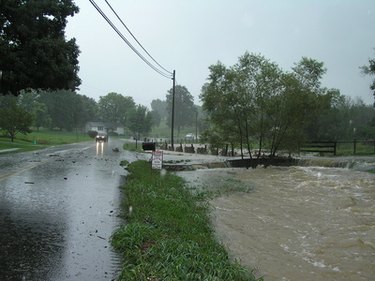
A sandbag wall is a form of protection for your home, garden or business against rising flood waters. To be effective, a sandbag wall has to be constructed correctly. According to the U.S. Army Corps of Engineers, sandbag walls are only effective up to a height of 5 feet. If you need a higher level of wall, sandbags are not the right option. The preferred height for a sandbag wall is 3 feet high. You'll need to get bags and sand from a local hardware or home supply store once you calculate how many bags you need.
Step 1
Measure the length of the area that you plan to protect. Determine the number of feet in length that your wall will need to be.
Video of the Day
Step 2
Determine the height in feet that your wall needs to be. You can get some assistance on deciding this from the local government's environmental, building inspections or natural resources department.
Step 3
Determine how many sandbags you'll need. Use the following scale to determine how many sandbags you need per linear foot of wall based on the height of the wall. A 1-foot wall needs five bags per foot, a 2-foot wall needs 10 bags per foot, a 3-foot wall needs 21 bags per foot, a 4-foot wall needs 36 bags per foot and a 5-foot wall needs 55 bags per foot.
Step 4
Multiply the number of bags needed per foot by the total length of the wall. For example, a wall 20 feet long that is 3 feet high needs 420 sandbags.
Warning
Sandbags need to be filled correctly in order to stack solidly and hold back water. See References for a link to the U.S. Army site describing how to correctly fill and stack sandbags.
Video of the Day